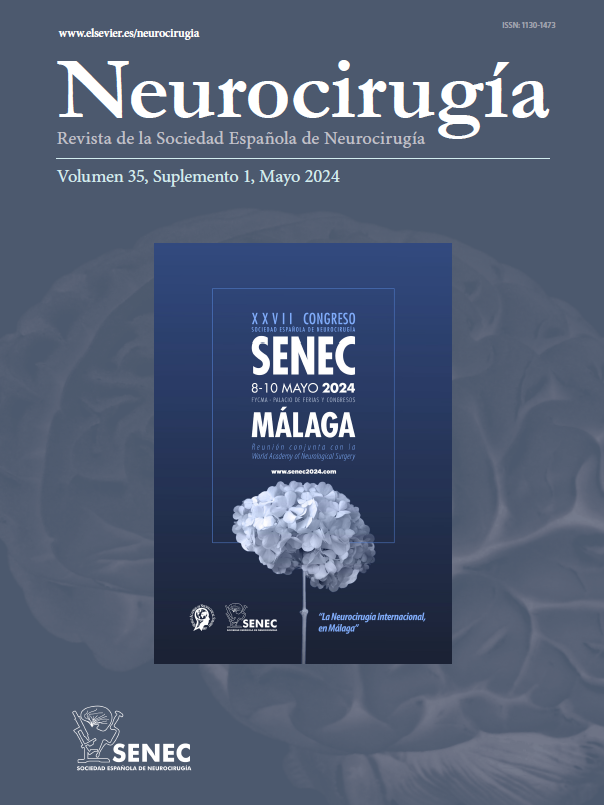P-112 - CASE REPORT: 12 Y-O FEMALE WITH A SPETZLER-MARTIN 5 ATERIOVENOUS MALFORMATION, A 4 YEAR STORY FROM EMBOLIZATION TO MICROSURGICAL RESECTION
Hospital Sant Joan de Deu, Esplugues de Llobregat, Spain.
Introduction: The neurosurgical approach for an arteriovenous malformation (AVM) in the basal ganglia, insula and thalamus is controversial, with annual rates of intraparenchymal hemorrhage (IPH) of 10-34% and mortality of up to 62.5% a non-surgical management is preferred. Series described microsurgical resections in selected patients. The challenge is greater in children.
Case report: A right-handed 12-year-old female patient presents a 4 year follow-up history. Initially presented with a right thalamo-putaminal bleed caused by a Spetzler-Martin 5 AVM, an endovascular-embolization was preferred. During the first year she suffered three IPH associated with intraventricular hemorrhage (IVH), all managed with the same technique and for two years a 4/5 left-hemiparesis was established until again she presented with a new IPH. A two-stage endovascular exclusion of the AVM was planned, the first being successful, however in the interval period an IPH with left fraciobrachiocrural hemiplegia and visual impairment was the reason to try and solve this problem with a microsurgical approach. A pterional craniotomy with a transilvian-transinsular approach was performed with a complete microsurgical resection of the AVM and a cerebral blood flow improvement. She was discharged after 10-days of the surgery with 3/5 left-hemiparesis. During one-year follow-up she is able to walk independently but presents with cognitive-behavioural, memory and mood disorders.
Discussion: An AVM in the pediatric age is a very challenging pathology. With a higher Spetzler-Martin grade we prefer a non-surgical approach. A close follow-up must be carried out. If there is life threatening event a microsurgical approach can be the best option.







